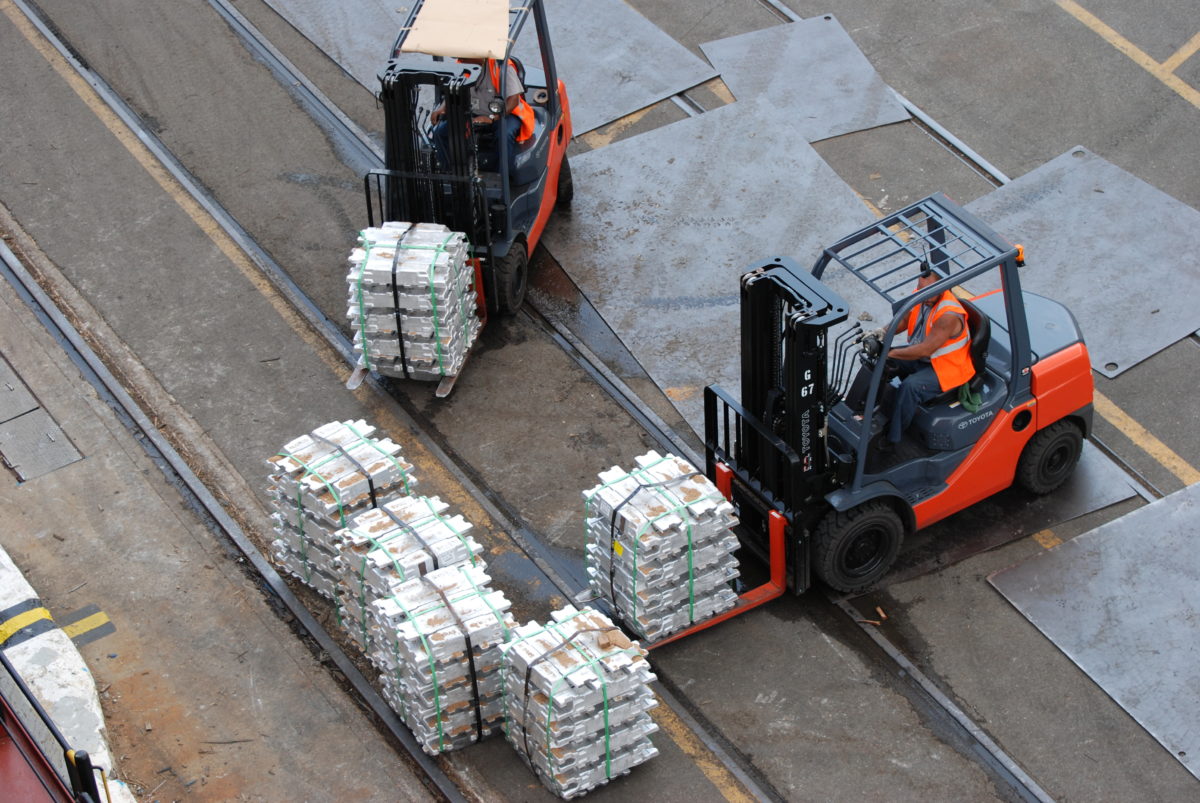
Longshoremen handling aluminum ingots at port. Photo Credit: JAXPORT, Meredith Fordham Hughes
Statistics Canada released the June data this morning at 5:30am PDT, and summarized it as follows:
Canada’s exports were down 5.1% in June, while imports fell 4.3%, both due in part to significant decreases in crude oil, as well as aircraft and other transportation equipment and parts. As a result, Canada’s merchandise trade balance remained in a surplus position, settling at $136 million after posting a $556 million surplus in May. The narrow surplus in June represented 0.1% of total monthly merchandise trade and is within the typical margins for revisions to the trade balance in subsequent months.1
Canadian Alliance President William McKinnon said:
“While statistical trends indicated a softening economy; continued bullish demand for Metro Vancouver port related activities will fuel a fast recovery.”
Highlights:
- Exports of energy products decreased 7.4% in June to $10.0 billion
- Exports of aircraft and other transportation equipment and parts were down 25.1% to $2.2 billion in June.
- Total imports were down 4.3% in June to $50.2 billion, the lowest level since November 2018
- Imports of aircraft and other transportation equipment and parts fell 25.8% to $1.7 billion in June, showing high volatility since January 2019
- Imports of energy products, down 14.8% to $2.7 billion, also contributed to the overall decline in June
- Canada’s trade surplus with the United States narrowed slightly to $5.7 billion in June
- Exports to the United States were down 3.9%, mainly on lower exports of crude oil, while imports decreased 3.8%
- Exports to countries other than the United States fell 8.4% to $12.7 billion in June
- The steel/aluminum etc. tariffs with the US were lifted at the end of May after almost a year, and steel exports increased 15.8% as a result, while aluminum increased 47.2%
What Is the Canada Trade Balance Update and What Does It Mean To Canadian Business?
Canada’s Trade Balance refers to the total value of its exports and imports. A negative balance indicates that we are purchasing more from the rest of the world than it is purchasing from us. A positive balance indicates that exports exceed imports.
Canada’s transport and logistics industry plays an integral role in facilitating trade with other countries. High-quality logistics help Canada procure a positive trade balance. Weak logistics can diminish trade activity with other countries, increasing the chances of a deficit.
By refining supply chain operations, it is easier for Canada to integrate itself into the global trading system. This can be accomplished with refined border procedures, shipping times, storage facilities, transportation and more. Doing so helps imports and exports move smoothly, strengthening Canada’s local economy.
Follow us on Twitter or LinkedIn to hear about the latest trends and updates from the world of logistics, tailored to how they affect you, the 3PL and supply chain management customer.
1 Statistics Canada. “Canadian International Merchandise Trade, June 2019.” Statistics Canada: Canada’s National Statistical Agency / Statistique Canada : Organisme Statistique National Du Canada. August 2, 2019. Accessed August 02, 2019. https://www150.statcan.gc.ca/n1/daily-quotidien/190802/dq190802a-eng.htm.
2 “Canada Balance of Trade.” Canada Balance of Trade | 2019 | Data | Chart | Calendar | Forecast | News. Accessed July 03, 2019. https://tradingeconomics.com/canada/balance-of-trade.
